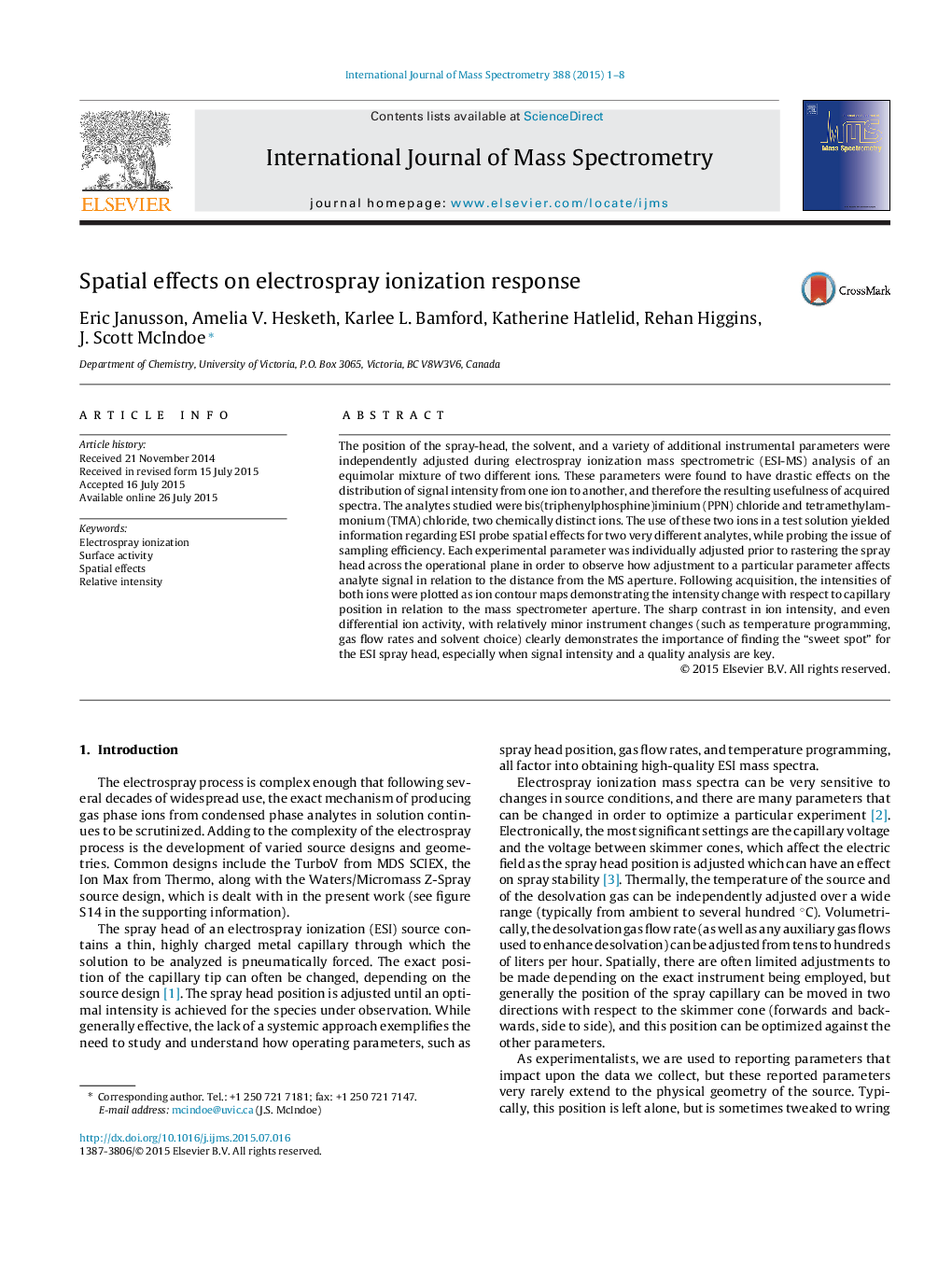| Article ID | Journal | Published Year | Pages | File Type |
|---|---|---|---|---|
| 1192365 | International Journal of Mass Spectrometry | 2015 | 8 Pages |
•Several mass spectrometric experimental parameters and their effects on analyte response were investigated.•The response of two different cations was measured across the moveable range of the ESI source spray head.•Contour plots were used to develop a three-dimensional sense of spray head position effects on ion intensity.•Using the contour plots we are able to examine how changes to the experiment settings affect differential activity in analytes across the operational plane of the ESI-MS source.
The position of the spray-head, the solvent, and a variety of additional instrumental parameters were independently adjusted during electrospray ionization mass spectrometric (ESI-MS) analysis of an equimolar mixture of two different ions. These parameters were found to have drastic effects on the distribution of signal intensity from one ion to another, and therefore the resulting usefulness of acquired spectra. The analytes studied were bis(triphenylphosphine)iminium (PPN) chloride and tetramethylammonium (TMA) chloride, two chemically distinct ions. The use of these two ions in a test solution yielded information regarding ESI probe spatial effects for two very different analytes, while probing the issue of sampling efficiency. Each experimental parameter was individually adjusted prior to rastering the spray head across the operational plane in order to observe how adjustment to a particular parameter affects analyte signal in relation to the distance from the MS aperture. Following acquisition, the intensities of both ions were plotted as ion contour maps demonstrating the intensity change with respect to capillary position in relation to the mass spectrometer aperture. The sharp contrast in ion intensity, and even differential ion activity, with relatively minor instrument changes (such as temperature programming, gas flow rates and solvent choice) clearly demonstrates the importance of finding the “sweet spot” for the ESI spray head, especially when signal intensity and a quality analysis are key.
Graphical abstractFigure optionsDownload full-size imageDownload high-quality image (122 K)Download as PowerPoint slide
